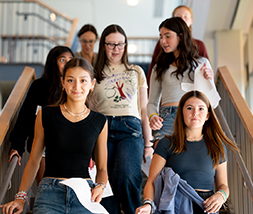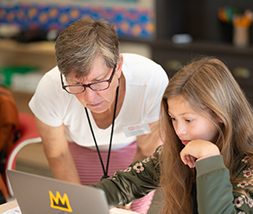Unintended Consequences
Head of School Sarah Pelmas
At my dinner table the other night, we were talking about ecological unintended consequences, and in particular about tropical coral reefs. Scientists have observed that tropical coral reefs near islands with sea birds living on them grow more rapidly and recover more quickly from bleaching events than coral reefs near islands without birds on them—because of the fertilizing contributions of the birds’ guano. But why would islands not have birds on them, you might wonder? Typically, it’s because those islands are overrun by rats, an invasive species accidentally introduced by the humans who sailed to those islands; the rat population grew when they discovered a rich source of food in the birds’ eggs. Without the benefit of the birds’ guano, the nearby coral reefs did not recover well, or sometimes at all, after a bleaching event. Human exploration has brought much good with it, but also created unintended consequences such as introducing into these new ecosystems non-native species with no natural predators.
New discoveries or inventions almost always guarantee unwanted change along with the benefits they bring. I couldn’t help but reflect on this problem as I read an article entitled “End the Phone-Based Childhood Now,” by Jonathan Haidt, a psychologist and writer you may have heard of, whose new book, The Anxious Generation: How the Great Rewiring of Childhood is Causing an Epidemic of Mental Illness, is an expanded discussion of the ideas in that article. The article is a full-throated condemnation of phone culture, globally, especially and particularly for children and teens, with special attention on the significant challenges of social media. I think we all know arguments like this; maybe we have even made those arguments ourselves. “Screen time” is almost always characterized as negative, and as parents we often nag our children about their phones, or set up endless series of rules about phone use in the house, at particular times of day, when traveling, and so on.
And it turns out that our children agree with us. In his article, Haidt cites a study from Leonardo Bursztyn, an economist at the University of Chicago, who tested the value of social media with college students by asking how much they would need to be paid to get off particular platforms. Generally, students said they would need to be paid $50 per platform to stop using them. But when they were asked how much they would need to be paid if everyone else was also getting off the platforms, the answer was “less than zero. In each case, most students were willing to pay to have that happen.”
Haidt has several suggestions to change the domination of phones, including no cell phones before high school, no social media before age 16, no cell phones in schools, and increased play and independence for teens and preteens in general. All these suggestions are active discussions in most schools I know, and among teachers and parents, and certainly at Winsor as well. And it is complicated and hard: phones have brought tremendous improvements to our lives, and even to the lives of our children. But there have been unintended consequences to phone culture, and we are now living in those consequences, not the least of which are increased loneliness, isolation and anxiety.
Am I equating phones with rats? Or maybe with colonizers? It might seem so. I am struck by the lessons our natural world offers us, particularly the profoundly hard work of trying to understand unintended consequences, and working to remedy some of the more troubling ones.
The answer is not as easy as saying that we should simply stop using our phones and go for a walk or have a cup of tea with a friend, though that is not a bad start. We live in this incredible natural world, yet we are often so detached from it. So, too, we live in this incredible social world, and yet we often avoid the relationships and encounters that would confirm our sense of purpose and meaning, our connection with one another, and our joy. Schools like Winsor are typically a source of joy and meaningful work, and as we think about what builds us up and what causes us harm, we have the chance each day to increase our joy in learning and our commitment to making our community stronger and happier. As we head into spring together, let’s make sure we take every opportunity to do so.





